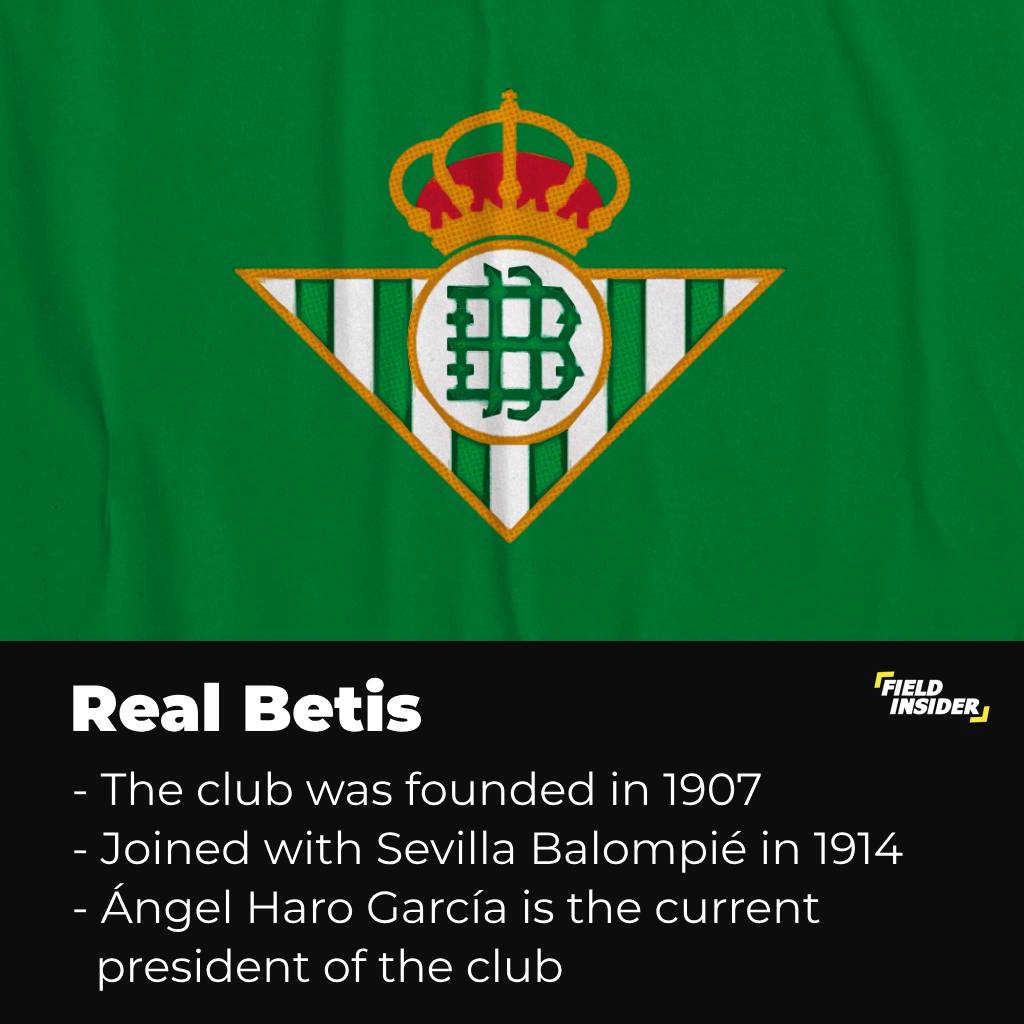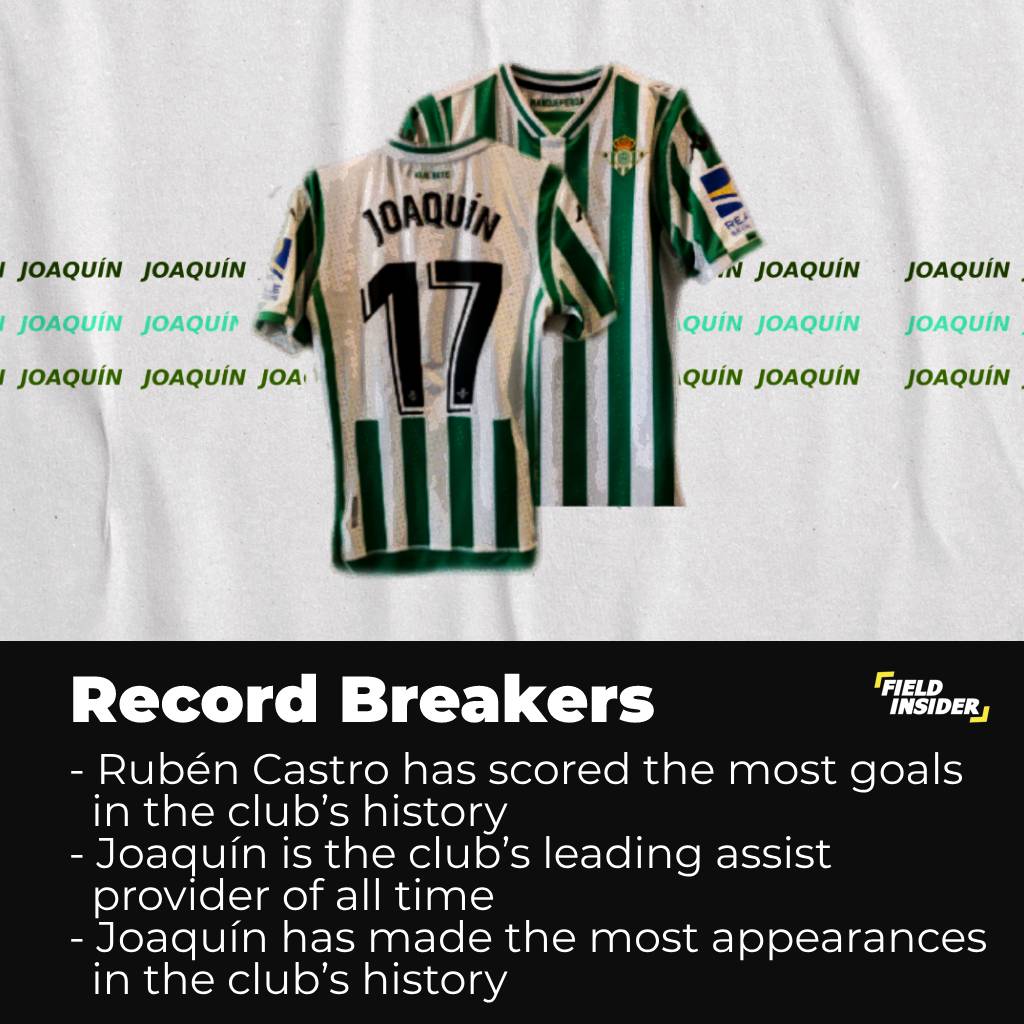Who Are Real Betis? History, Stats & More
Real Betis Balompié, commonly referred to as Real Betis or just Betis, is a distinguished Spanish professional football club hailing from Seville, Andalusia. Since its inception in 1907, the club has etched itself in La Liga. Their spirited matches unfold at the iconic Estadio Benito Villamarín, nestled in the southern heart of the city.
As we are on a spree of covering all the major clubs in La Liga, Real Betis is our next stop. If you haven’t checked out our coverage of other clubs, you can always head over to our soccer section and read about your favorite club!
As for today, let’s focus on Real Betis!
Who Are Real Betis In La Liga?
As a result of the split of Sevilla FC, Real Betis sprang up on the football grounds. They joined Sevilla Balompié in 1914. Since their inception, they have made noteworthy achievements, including winning the league in 1935 and the Copa del Rey in 1977, 2005, and 2022.
Despite ups and downs, their motto reads, “Viva el Betis manque (aunque) pierda!”, meaning “Betis lives on even if they lose!”. This motto reflects their spirited journey as a team.
History Of Real Betis

Early years:
During the Spanish Second Republic (1931–1939), Betis Balompié was the name due to the absence of royal endorsements. The club’s identity was restored after the Spanish Civil War. In 1931, Betis reached the Copa del Presidente de la República final, losing 3-1 to Athletic Bilbao.
They marked their 25th anniversary year by securing their first Segunda División title in 1932, becoming the first Andalusian club in La Liga.
Under Irish coach Patrick O’Connell, Betis achieved their sole La Liga title on April 28, 1935, edging out Madrid FC by a single point. However, the team’s fortunes dipped due to financial struggles and the impact of the Civil War, resulting in their relegation after just 15 months.
Although Betis briefly returned to the top division in 1954, a decline ensued, leading to relegation to the Tercera División in 1947. These ten years in the lower division are often seen as defining the club’s character. The club’s devoted fanbase, known as the “Green March”, remained steadfast through these times.
Upon their return to the second tier in 1954, Real Betis achieved a remarkable feat by winning titles in the three major divisions in Spain. Much credit for this resurgence is attributed to chairman Manuel Ruiz Rodriguez.
Real Betis in La Liga
A historic cup final in 1931 and promotion to the First Division in 1932 marked the beginning of Real Betis’ remarkable journey. With Irish coach Patrick O’Connell leading the way, the club clinched its sole La Liga title in 1935, edging out Real Madrid by a slim margin. Sadly, this triumph was the harbinger of a gradual decline due to team disbandment and financial troubles, leading to relegation to the Third Division in 1947.
The subsequent seven years in the Third Division were testing times for the club. Despite the sporting challenges, the faithful supporters, known for the “Green March,” filled the stadium and stood by their team even during away games. This unwavering support aided the club’s return to the Second Division in 1954.
While Real Betis briefly revisited the top tier, their fortunes oscillated until the 1974–75 season, when they solidified their place in the top flight. Under Lorenzo Serra Ferrer’s management, the club achieved a commendable third position in the 1994–95 season, earning a spot in the UEFA Cup. After a period of avoiding relegation, the 2008–09 season saw their unfortunate descent to the second division.
With Rubén Castro’s scoring prowess, Betis started the 2011–12 season strong, securing four consecutive victories. Their return to La Liga after a hiatus ended with a 13th-place finish.
How Was The Club Founded?
The name “Betis” connects back to Baetis, the Roman title for the Guadalquivir river that flows through Seville. The club embraced “Real” (meaning royal) in 1914, following the support of King Alfonso XIII.
While Sevilla FC, Betis’ city rivals, initiated the football scene in Sevilla in 1905, a second club named España Balompié emerged in September 1907. The term “Balompié” directly means “football” and was founded by local Polytechnic Academy students.
Even though the club was officially acknowledged as Sevilla Balompié in 1909, it was established two years earlier in 1907.
In its early days, Real Betis sported all-blue jerseys and white shorts, chosen for their simple availability. Amidst the Spanish Second Republic (1931–1939), royal endorsements were revoked, leading the club to be known as Betis Balompié until after the Spanish Civil War, when the full name was reinstated.
Fans And Culture Of Real Betis:
In a football landscape dominated by giants like Paris Saint-Germain and Bayern Munich, Betis stands out with its unconventional approach and modern superclub qualities.
Despite not boasting an extensive trophy cabinet or an enormous fan following, Betis shines through innovative initiatives. From the heartwarming “lluvia de peluches” tradition, where fans shower the pitch with children’s toys during Christmas, to welcoming a record number of disabled fans at matches, the club’s commitment to its community is evident.
Additionally, their green branding isn’t just for show—it reflects their dedication to environmental causes. Real Betis may not have the financial prowess of traditional superclubs, but it embodies their spirit.
While more silverware would be a bonus, Betis thrives on its unique identity and forward-looking ambitions, a journey that began gaining momentum upon their return to the Spanish top flight seven years ago.
Major Achievements In The History Of The Club:

Real Betis has etched its name in Spanish football history with remarkable achievements. The club clinched the league title in 1935 and celebrated Copa del Rey victories in 1977, 2005, and 2022.
A particularly unforgettable moment came in the 1977 Copa del Rey final against Athletic Bilbao, where a dramatic match ended 2–2, and Betis triumphed 8–7 in a penalty shootout, leaving fans in awe.
Despite this victory, the team faced ups and downs. Notably, Betis competed in the European Cup Winners’ Cup, reaching the quarterfinals and tangling with renowned teams like Milan. However, they couldn’t sustain their league momentum and experienced relegation.
Betis rebounded, securing their return to the top flight for the 1994–95 season. The club’s strong performance that season led to a remarkable third-place finish, earning them a spot in the UEFA Cup and showcasing their competitive spirit.

Notable Players In The History Of Real Betis
Real Betis has been graced by remarkable players who have etched their names in the club’s history. Here are some notable figures who left an indelible mark:
- Joaquín Sánchez
A true legend, Joaquín’s journey with Real Betis began at just 16 in the youth academy. His speed, skill, and magnetic charisma quickly won fans’ hearts. His contributions led to the Copa del Rey victory in 2005 and the club’s historic debut in the Champions League. - Julio Cardeñosa
Renowned as one of the club’s finest midfielders, Cardeñosa’s legacy spans 11 seasons, amassing 306 appearances and 42 goals. His presence on the field was instrumental in shaping Real Betis’ history. - Rubén Castro
A goal-scoring machine, Castro’s 136 goals in 260 appearances make him the club’s all-time top scorer. His eight-season stint saw consistent double-digit goals, showcasing his lethal finishing and strategic positioning. - Juan Merino
With a career spanning 13 seasons at Real Betis, Merino’s loyalty and dedication made him a revered figure on the field. - Rafael Gordillo
Hailed as one of the club’s finest, Gordillo’s legacy shines bright in Real Betis’ history. His skills and contributions on the pitch have solidified his place among the greats.
Top Goal-Scorers In the History Of The Club
| Name Of Players | No. of Goals Scored |
| Rubén Castro | 148 |
| Alfonso | 78 |
| Jorge Molina | 77 |
| Joaquín | 65 |
| Poli Rincón | 56 |
Top Assist-Providers In The History Of Real Bertis
| Name Of Players | No. Of Assists |
| Joaquín | 46 |
| Rubén Castro | 35 |
| Sergio Canales | 30 |
| Nabil Fekir | 26 |
| Cristian Tello | 20 |
Players With The Most Appearances For Club
| Name Of Players | No. Of Appearances |
| Joaquín | 488 |
| Arzu | 297 |
| Rubén Castro | 289 |
| Juanito | 285 |
| Toni Prats | 278 |
Most Expensive Transfers Of Real Bertis
| Name Of Player | Club From | Club To | Transfer Season | Transfer Cost |
| Denílson | São Paulo | Real Betis | 22/23 | €31.5 Million |
| Borja Iglesias | Espanyol | Real Betis | 15/16 | €28 Million |
| Giovani Lo Celso | Paris SG | Real Betis | 19/20 | €22 Million |
| Nabil Fekir | Olympique Lyon | Real Betis | 22/23 | €19.75 Million |
| William Carvalho | Sporting CP | Real Betis | 12/13 | €16 Million |
Home Of Real Betis: Estadio Benito Villamarin

Real Betis has found its fortress in the iconic Estadio Benito Villamarín. The club’s journey through various grounds finally settled on this remarkable stadium, reflecting its rich history.
Real Betis’ quest for a home ground led them through multiple locations, from Campo del Huerto de Mariana to Campo del Prado de San Sebastián, even sharing spaces with arch-rivals Sevilla. The determination to find their rightful home saw them settle at the Campo del Patronato Obrero and eventually at the Estadio de la Exposición in 1936.
The Estadio Benito Villamarín stands tall with a seating capacity of 60,720, providing a vibrant space for fans to rally behind their team. Formerly known as Estadio Manuel Ruiz de Lopera, the stadium has weathered changes and decisions, symbolizing the club’s resilience.
Plans for renovation, though met with delays, couldn’t diminish the stadium’s significance. In a momentous decision by the club’s associates, it was christened back as Estadio Benito Villamarín on October 27, 2010.
This stadium resonates with the triumphs, struggles, and unwavering support of Real Betis fans, standing as a testament to the club’s enduring spirit.
Rivalries Of Real Betis With Other Clubs
In the realm of Spanish football rivalries, El Clasico often claims the spotlight. However, a fierce battle for supremacy brews between Sevilla and Betis, igniting the city with unmatched passion.
Real Betis shares an intense and historic rivalry with their city counterparts, Sevilla FC. These two giants have locked horns a staggering 114 times in official competitions. Sevilla holds a 45% win ratio, securing victory in 31% of these encounters.
The rivalry’s roots trace back to February 8, 1915, when the clubs first clashed, resulting in a 4-3 win for Sevilla. This initial encounter ended prematurely due to escalating tensions that led to a pitch invasion.
The first official derby, Copa Andalucía, was held in 1916. In 17 editions of the cup, Sevilla dominated with 14 victories, overshadowing Betis’ sole triumph. An unforgettable 22-0 thrashing occurred when Betis sent their youth team in 1918.
The teams’ rivalry extended to league matches. Their first league meeting happened during the 1928–29 Segunda season, with team each clinching a home victory. A dramatic twist awaited in the 1934–35 top division clash, where Betis triumphed, securing the national championship.
The rivalry wasn’t devoid of controversy. Over the years, clashes have witnessed violence, from a security guard attacked by a Sevilla fan to players falling victim. Notably, a bottle-throwing incident involving Sevilla manager Juande Ramos led to the suspension of a Copa del Rey match in 2007. This derby isn’t just a clash of skills; it’s a battle of hearts and a testament to the unwavering passion of both sets of fans.
Conclusion; What Lies Ahead For The Club?
As Real Betis embarks on the 2023/24 season, the stage is set for another thrilling chapter. The club’s consistent presence in the UEFA Europa League for three consecutive seasons underlines the success of Manuel Pellegrini’s vision. Pellegrini’s approach highlights that preseason achievements might not always foretell a triumphant campaign; it’s a steady process that counts.
The return of Bellerin, following a season at FC Barcelona and Sporting Clube de Portugal, signals Betis’ commitment to bolstering their ranks. His endorsement of the growing talent in Major League Soccer reflects the increasing competitiveness of the American league.
Ranked 29th in the Opta Power Rankings and firmly securing the fourth spot in Spain behind the big three, Real Betis showcases resilience and improvement. Pellegrini’s strategic management has injected stability into a once-volatile squad.
Once again, make sure you explore the soccer section, crazy things are going on there for the fans of the beautiful game. Adios!








